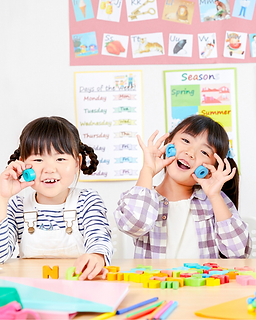
17 June 2025
Big Feelings, Little Tools: Visualization Techniques That Really Work
As parents, we’ve all witnessed it—that moment when a small frustration snowballs into a full-blown meltdown. Whether it’s anger, fear, sadness, or even excitement, big emotions can feel overwhelming for kids. The good news? Children can learn to manage their emotions—and one of the most magical tools to help them is visualization.
What is Visualization?
Visualization is like a superpower of the mind. It means creating pictures or stories in your imagination to help you feel calm, confident, or in control. It’s what athletes do before a big game—and what your child can do before a big day at school, when they're upset, or when they need a moment to reset.
Why Visualization Helps Kids Regulate Emotions
Here’s why it works:
It gives emotions a shape. Kids often don’t have the words to explain how they feel. Visualization lets them "see" their feelings in a way they understand.
It activates the calming part of the brain. Imagining peaceful scenes can soothe the nervous system and reduce stress.
It builds emotional awareness. Visualization helps kids notice and name their emotions instead of being swept away by them.
5 Kid-Friendly Visualization Techniques for Emotional Regulation
1. The Emotion Paintbrush
When to use: When your child is feeling overwhelmed and doesn’t know why.
How it works: Invite your child to close their eyes and imagine a blank canvas in front of them. Ask:
What color is your feeling right now?
What shape or size is it?
If you could give it a name, what would it be?
By “painting” their feelings, kids step into the role of observer, not reactor—which helps take the intensity down a notch.
2. The Calm Place Visualization
When to use: During tantrums, bedtime stress, or pre-event anxiety.
How it works: Have your child picture a peaceful place—a treehouse, a beach, a cozy reading nook. Encourage them to add:
What do you see?
What do you hear?
What do you feel under your feet or fingers?
This “mental getaway” helps them shift their focus from distress to comfort.
3. The Worry Cloud
When to use: When your child is ruminating or anxious.
How it works: Ask your child to imagine a fluffy cloud floating in the sky.
Have them place their worry on the cloud—like writing it or drawing it.
Watch it float away, getting smaller as it drifts into the sky.
This gentle image teaches letting go without feeling forced.
4. The Brave Balloon
When to use: Before a stressful situation like a test, a new environment, or speaking up.
How it works: Your child imagines holding a balloon full of bravery. As they breathe in, the balloon grows stronger and brighter.
With every breath, they absorb the “brave energy” into their body.
Picture themselves doing the hard thing with confidence.
This builds courage before a challenge arises.
5. The Emotion Train
When to use: To teach that emotions come and go.
How it works: Have your child imagine sitting safely at a train station.
Each train is a feeling—like “Angry Train” or “Worried Train.”
They can watch each one come and go without needing to jump on.
This teaches emotional acceptance and patience.
How Parents Can Support Visualization Practice
Practice when calm. Like any skill, visualization works best when it’s not rushed. Try it during bedtime or quiet moments first.
Use storybooks or drawing. After visualizing, invite your child to draw or tell a story about their image.
Do it with them. Children model their caregivers. Sit with them, close your eyes, and share your own calm place or brave balloon.
Make it routine. Use it before school, bedtime, or transitions—so it becomes a go-to tool in their toolbox.
Final Thoughts: Little Minds, Big Tools
Kids don’t always know how to talk about their feelings, but with visualization, they can see and shape them. By guiding your child through these powerful mental images, you’re not just calming them in the moment—you’re helping them build emotional wisdom for life.
Visualization is like planting seeds in the mind. With practice, those seeds grow into confidence, calm, and the ability to weather emotional storms.
Emotions don’t have to be scary. With your support and their imagination, kids can learn to ride the waves—and even enjoy the ride.
You might also like...
3 Fun Ways to Teach Communication in Classrooms
The Surprising Psychology of Puzzles
Why Mindfulness Worksheets Help Kids Regulate Emotions


